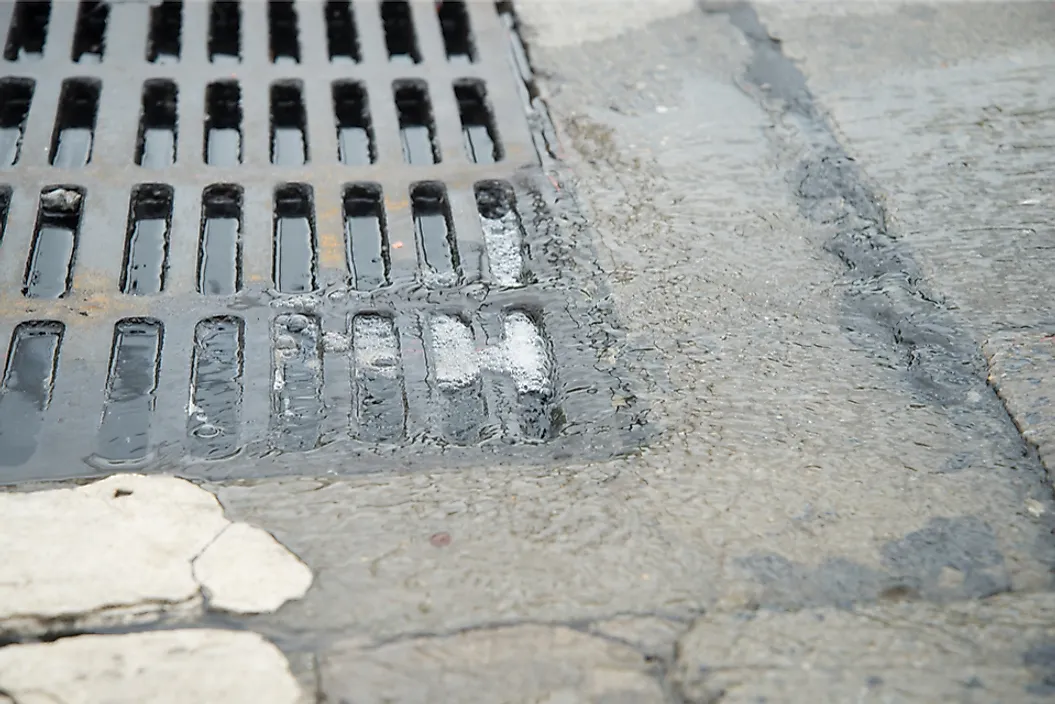What Is Stormwater Pollution?

What Is Stormwater?
The term stormwater typically refers to water created by and left over from harsh weather conditions. Additionally, it includes water runoff created by melting snow and ice. Outside urban areas, stormwater either falls or flows into bodies of water, or is soaked up by surrounding plants and soil. In this case, stormwater plays an important role in environmental health by providing plants and animals with much needed water and by restoring groundwater levels. In urban areas, water tends to collect on impermeable surfaces, which means the excess water cannot be absorbed by the ground. Instead, this water sits on the surface until it evaporates or runs off into nearby drains and waterways.
How Does Stormwater Pollute?
In natural and undeveloped settings, stormwater is beneficial to the surrounding environment. In manmade and artificial settings, however, stormwater can be detrimental as it results in flooding and increased water discharge into natural areas. Additionally, stormwater runoff tends to carry contaminants from one location to another, either via the drainage system of a particular urban area or by running off the payment and into the nearest waterway. The initial runoff of stormwater carries the highest concentration of pollutants, which is washed away from city roadways, agricultural areas, and even yards and gardens. This stormwater pollution may consist of garbage, vehicle fluids, pesticides, and animal waste. This debris ends up in nearby bodies of water because urban areas have been stripped of plants, which act as pollutant filters. In addition, stormwater upsets the natural cycle of watershed areas by introducing excess water at extreme volumes. This increased force often leads to erosion, which in turn increases the amount of sediment carried by the water. An overabundance of sediment in the water may disrupt the natural life cycle of native fish species, as well as promoting the growth of algae and non-native plant species.
How to Prevent Stormwater Pollution?
Preventing stormwater pollution requires implementing a system of stormwater management in urban areas. Stormwater management systems work to reduce pollution by installing filtration mechanisms in storm drains, implementing street cleaning programs, and regulating the use of pesticides and herbicides. Some effective prevention programs incorporate retention ponds, which allow municipalities to reuse some of the collected stormwater. Additionally, urban planning professionals are beginning to incorporate infrastructure specifically aimed at minimizing stormwater pollution by reducing urban flooding. Some of these new projects set aside city space for artificial wetlands, ponds, and even sections of grass between sidewalks and roadways. Porous paving has also been used recently, which allows water to flow through the sidewalk or roadway and into the ground beneath. Another new urban project intended to reduce stormwater pollution, known as biofiltration, collects stormwater discharge before it rushes out into nearby waterways. After this water is collected, the biofiltration system releases the collected water out into the local watershed at a controlled speed. This reduced speed prevents some of the previously mentioned problems, such as erosion and algae growth.











